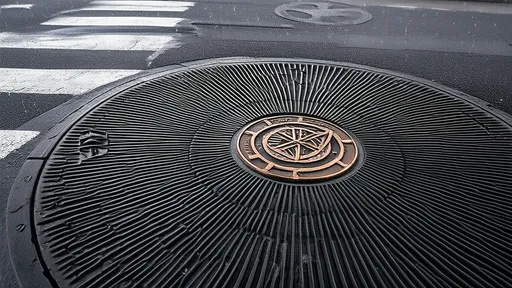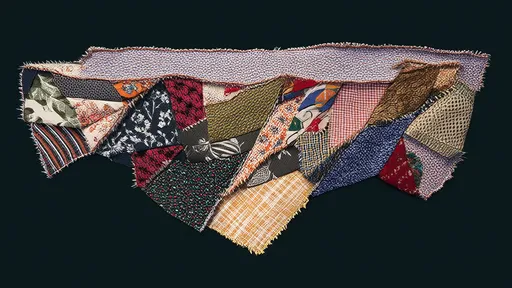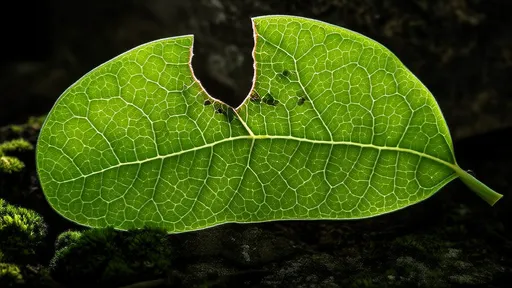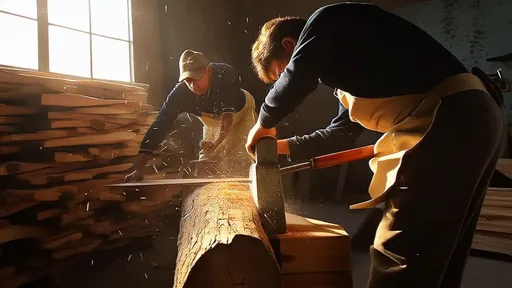The rhythmic dance of two craftsmen pushing a wooden plane across a length of cedar is more than just a display of skill—it’s a symphony of resonance, a physical manifestation of harmony between human and material. "The Resonance Spectrum of Cedar Curls: A Study in Two-Person Planing" delves into this rarely examined intersection of woodworking, acoustics, and collaborative labor. What begins as a simple act of shaping timber reveals hidden patterns, both in the delicate spirals of shavings and in the vibrations that pass through the wood, the tools, and the workers themselves.
For centuries, Japanese carpenters have practiced tategu-shi (door and panel craftsmanship) using techniques that rely on silent communication between partners. The two-person plane, or daiganna, requires perfect synchronization—a push and pull that generates not just smooth surfaces but also a unique acoustic footprint. Researchers at the Kyoto Institute of Traditional Arts recently documented this phenomenon by attaching sensors to planes and recording the harmonic frequencies produced during joint planing sessions. The findings? Cedar, with its straight grain and low density, amplifies specific resonant frequencies between 80Hz and 250Hz, creating what the team calls "tactile soundwaves."
The curl of the shaving tells its own story. Unlike the fractured chips produced by mechanical planers, hand-planed cedar forms continuous ribbons that coil like violin strings. These curls—some stretching over three meters unbroken—act as physical records of the craftsmen’s movements. Dr. Haruka Shimoda, lead researcher on the project, notes: "Each spiral contains micro-variations in thickness that correspond to minute adjustments in pressure. When we unspool them under polarized light, they resemble topographic maps of the wood’s internal stresses." This discovery has unexpected implications for restoring antique wooden structures, where analyzing old shavings trapped in joints could reveal original craftsmanship techniques.
Beyond acoustics and material science, the practice embodies a vanishing philosophy of labor. In workshops where daiganna is still used, senior craftsmen speak of "listening through the palms"—a tactile awareness of their partner’s movements transmitted through the plane’s handles. This unspoken dialogue creates feedback loops; the wood’s resistance informs pressure adjustments, which in turn alter the resonance, guiding the next stroke. Modern noise analysis shows these interactions produce identifiable patterns, with experienced pairs demonstrating harmonic convergence within 15-20 strokes, while novices generate discordant frequencies.
The research has sparked interest beyond traditional carpentry. Architects are exploring how cedar’s resonant properties could inform concert hall designs, while neurologists study the brainwave synchronization occurring between collaborating craftsmen. Perhaps most poetically, the project has revived appreciation for the wood itself—cedar trees grown on Japan’s Yoshino mountains, where tight growth rings from centuries of careful forestry create the ideal medium for this silent duet between human hands and fibrous material.
As power tools dominate contemporary woodworking, studies like this illuminate what’s lost when efficiency supersedes resonance. The shavings curled beside a daiganna aren’t mere waste; they’re the physical score of an ephemeral performance, one where wood, steel, and human muscle compose vibrations that linger in the timber long after the plane has stopped moving.

By /Aug 8, 2025

By /Aug 8, 2025

By /Aug 8, 2025

By /Aug 8, 2025

By /Aug 8, 2025

By /Aug 8, 2025

By /Aug 8, 2025

By /Aug 8, 2025

By /Aug 8, 2025

By /Aug 8, 2025

By /Aug 8, 2025

By /Aug 8, 2025

By /Aug 8, 2025

By /Aug 8, 2025

By /Aug 8, 2025

By /Aug 8, 2025

By /Aug 8, 2025

By /Aug 8, 2025

By /Aug 8, 2025

By /Aug 8, 2025